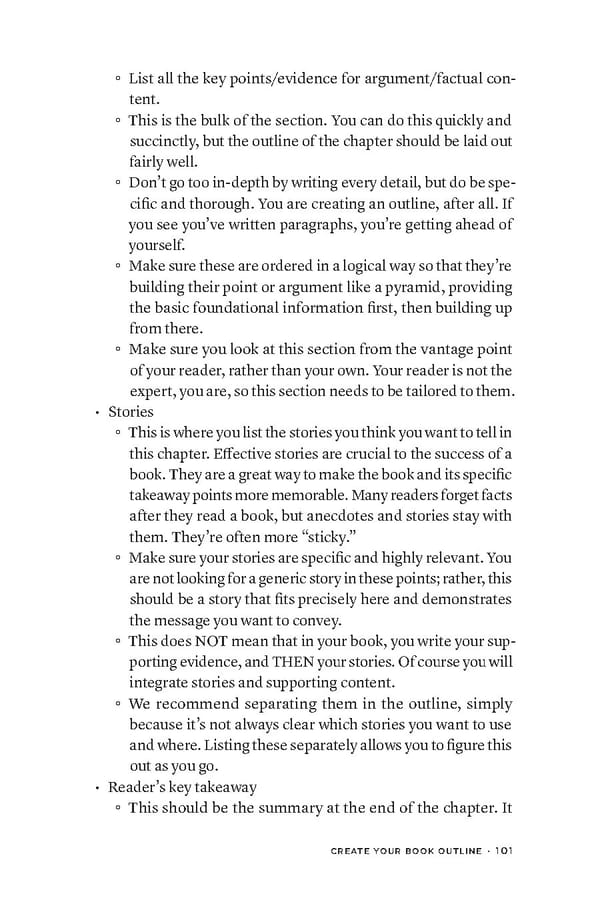◦ List all the key points/evidence for argument/factual con- tent. ◦ This is the bulk of the section. You can do this quickly and succinctly, but the outline of the chapter should be laid out fairly well. ◦ Don’t go too in-depth by writing every detail, but do be spe- cific and thorough. You are creating an outline, after all. If you see you’ve written paragraphs, you’re getting ahead of yourself. ◦ Make sure these are ordered in a logical way so that they’re building their point or argument like a pyramid, providing the basic foundational information first, then building up from there. ◦ Make sure you look at this section from the vantage point of your reader, rather than your own. Your reader is not the expert, you are, so this section needs to be tailored to them. • Stories ◦ This is where you list the stories you think you want to tell in this chapter. Effective stories are crucial to the success of a book. They are a great way to make the book and its specific takeaway points more memorable. Many readers forget facts after they read a book, but anecdotes and stories stay with them. They’re often more “sticky.” ◦ Make sure your stories are specific and highly relevant. You are not looking for a generic story in these points; rather, this should be a story that fits precisely here and demonstrates the message you want to convey. ◦ This does NOT mean that in your book, you write your sup- porting evidence, and THEN your stories. Of course you will integrate stories and supporting content. ◦ We recommend separating them in the outline, simply because it’s not always clear which stories you want to use and where. Listing these separately allows you to figure this out as you go. • Reader’s key takeaway ◦ This should be the summary at the end of the chapter. It CrEATE yOUr BOOk OUTliNE · 101
 The Scribe Method by Tucker Max Page 100 Page 102
The Scribe Method by Tucker Max Page 100 Page 102